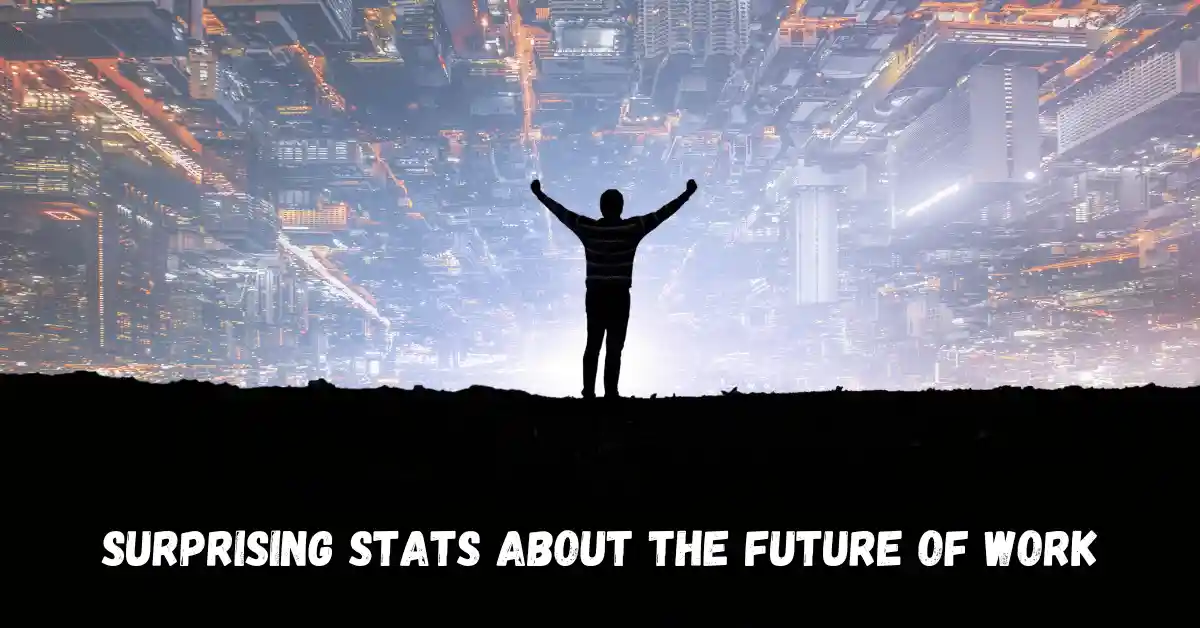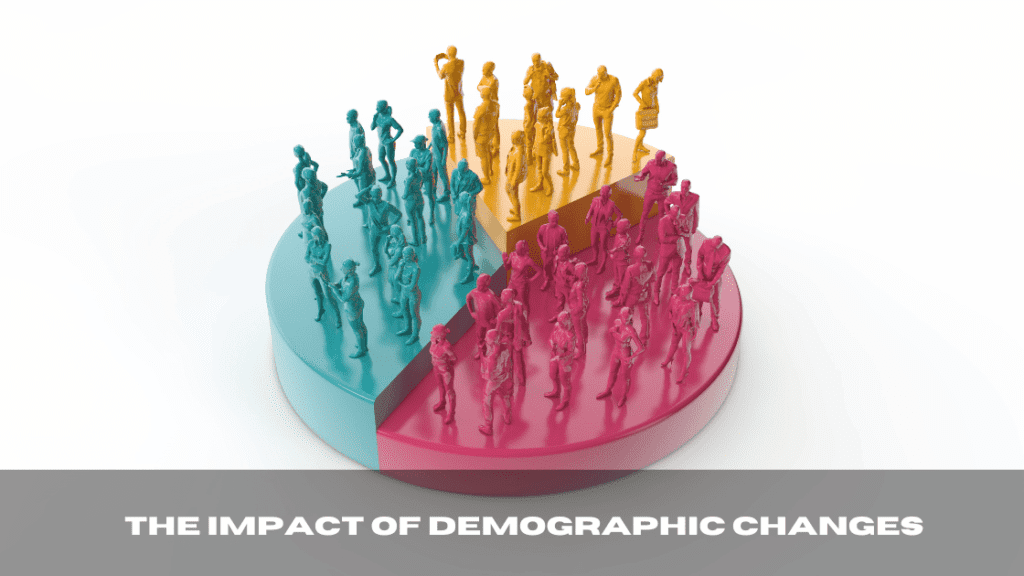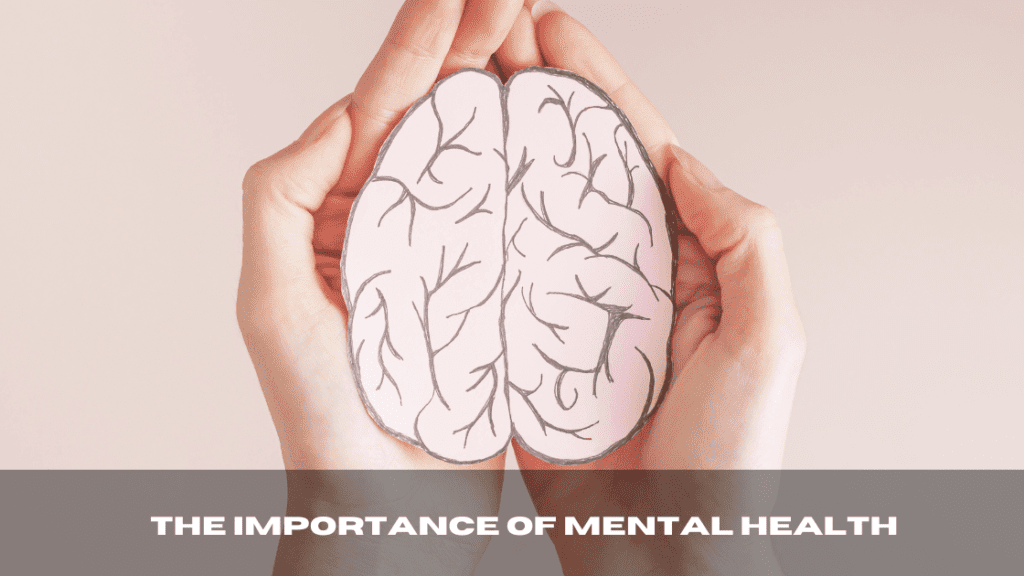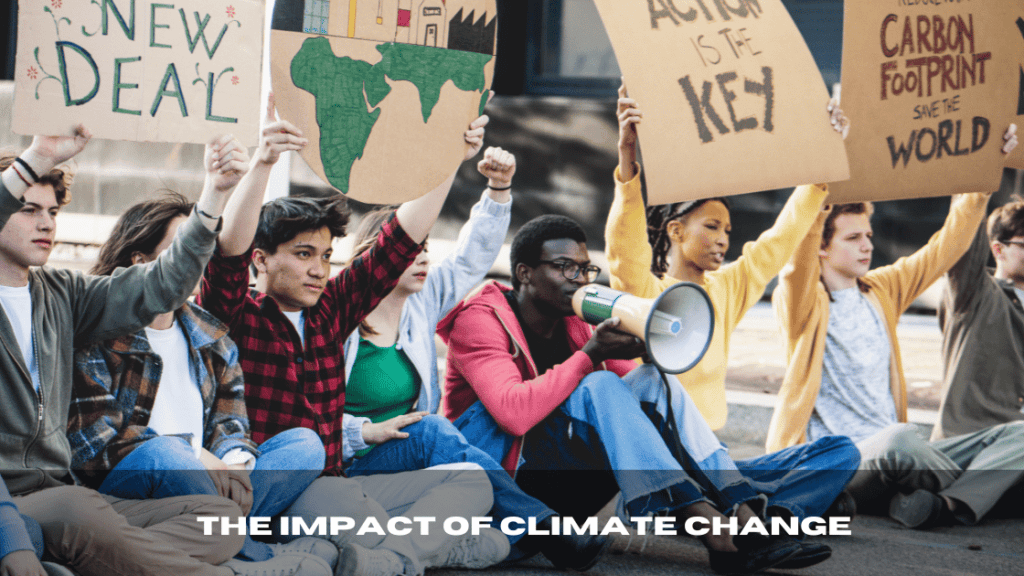10 Surprising Stats About the Future of Work


The world of work is changing rapidly, and statistics can provide valuable insights into this important and relevant topic.
Here are 10 surprising stats about the future of work that you need to know.
Statistic #1: The Rise of Remote Work


- 70% of the workforce will work remotely at least five days a month by 2025. (Source: Gartner)
- Remote work can lead to increased productivity, better work-life balance, and lower costs for both employers and employees.
Benefits of Remote Work:
- Flexibility: Remote work allows employees to work from anywhere, at any time, as long as they have a stable internet connection. This flexibility can lead to increased job satisfaction and better work-life balance.
- Cost Savings: Remote work can also lead to cost savings for both employers and employees. Employers can save on office space and utilities, while employees can save on commuting costs and work-related expenses.
- Increased Productivity: Studies have shown that remote workers are often more productive than their in-office counterparts. This is because remote workers have fewer distractions and interruptions, and they can design their work environment to suit their needs.
Statistic #2: The Impact of Automation and AI


- 47% of jobs in the US are at risk of being automated. (Source: McKinsey)
- Jobs that require creativity, critical thinking, and emotional intelligence are less likely to be automated.
Benefits of Automation and AI:
- Increased Efficiency: Automation and AI can help businesses automate repetitive and time-consuming tasks, freeing up employees to focus on more strategic and creative work.
- Improved Accuracy: Automation and AI can also help improve accuracy and reduce errors. This is because machines are less prone to mistakes than humans.
- Cost Savings: Automation and AI can lead to cost savings by reducing the need for manual labor and increasing efficiency.
Statistic #3: The Importance of Lifelong Learning


- 54% of workers will need to upgrade their skills by 2025 due to automation. (Source: World Economic Forum)
- Lifelong learning can lead to higher salaries, better job opportunities, and increased job satisfaction.
Benefits of Lifelong Learning:
- Career Advancement: Lifelong learning can help workers stay up-to-date with the latest trends and technologies in their industry. This can lead to career advancement and better job opportunities.
- Personal Growth: Lifelong learning can also lead to personal growth and development. By learning new skills and expanding their knowledge, workers can become more well-rounded and versatile.
- Improved Job Satisfaction: Lifelong learning can also lead to improved job satisfaction. By continually learning and growing, workers can feel more engaged and fulfilled in their jobs.
Statistic #4: The Rise of the Gig Economy


- 50% of the US workforce will be freelancers by 2027. (Source: Intuit)
- The gig economy offers flexibility, autonomy, and the ability to earn extra income, but it also comes with challenges such as job insecurity and lack of benefits.
Benefits of the Gig Economy:
- Flexibility: The gig economy offers workers the flexibility to choose when, where, and how they work. This can be especially appealing for workers who have other commitments, such as family or school.
- Autonomy: The gig economy also offers workers more autonomy and control over their work. This can be empowering and fulfilling for workers who want to be their own boss.
- Extra Income: The gig economy can also provide workers with the opportunity to earn extra income. This can be especially helpful for workers who are looking to supplement their primary income.
Challenges of the Gig Economy:
- Job Insecurity: One of the biggest challenges of the gig economy is job insecurity. Because gig workers are not considered employees, they often do not have access to the same benefits and protections as traditional employees.
- Lack of Benefits: Another challenge of the gig economy is the lack of benefits such as health insurance, retirement savings, and paid time off.
- Unpredictable Income: Gig workers may also face unpredictable income, as their earnings can vary from week to week.
Statistic #5: The Importance of Diversity and Inclusion


- Companies with diverse workforces are 35% more likely to outperform their competitors. (Source: McKinsey)
- Diversity and inclusion initiatives can lead to better decision-making, increased creativity, and a more positive company culture.
Benefits of Diversity and Inclusion:
- Better Decision-Making: Diversity and inclusion can lead to better decision-making by bringing together people with different perspectives, experiences, and backgrounds.
- Increased Creativity: Diversity and inclusion can also lead to increased creativity by fostering a culture of innovation and collaboration.
- Positive Company Culture: Diversity and inclusion can also create a more positive company culture by promoting respect, empathy, and understanding.
Statistic #6: The Impact of Demographic Changes


- The global workforce will be 50% female by 2025. (Source: World Economic Forum)
- An aging population will lead to a shortage of skilled workers in certain industries, such as healthcare and technology.
Impact of Demographic Changes:
- Gender Equality: The increasing number of women in the workforce can lead to greater gender equality and more diverse leadership.
- Aging Population: An aging population can lead to a shortage of skilled workers in certain industries, such as healthcare and technology.
- Increased Diversity: The global workforce will become more diverse, with more people from different cultures, backgrounds, and experiences.
Statistic #7: The Importance of Work-Life Balance


- 87% of workers say that work-life balance is important to them. (Source: Glassdoor)
- Promoting work-life balance can lead to lower stress levels, higher job satisfaction, and reduced turnover.
Benefits of Work-Life Balance:
- Lower Stress Levels: Promoting work-life balance can lead to lower stress levels by giving workers the time and space to recharge and relax.
- Higher Job Satisfaction: Work-life balance can also lead to higher job satisfaction by allowing workers to prioritize their personal lives and interests.
- Reduced Turnover: Promoting work-life balance can also reduce turnover by making workers feel more engaged and committed to their jobs.
Statistic #8: The Rise of Flexible Work Arrangements


- 80% of workers would choose a job with flexible work arrangements over a job that doesn’t offer them. (Source: FlexJobs)
- Flexible work arrangements can lead to increased productivity, lower costs, and a more engaged workforce.
Benefits of Flexible Work Arrangements:
- Increased Productivity: Flexible work arrangements can lead to increased productivity by allowing workers to work when and where they are most productive.
- Lower Costs: Flexible work arrangements can also lead to lower costs by reducing the need for office space and utilities.
- Engaged Workforce: Flexible work arrangements can also create a more engaged workforce by giving workers more control over their work and personal lives.
Statistic #9: The Importance of Mental Health


- 61% of workers say that mental health is more important than salary. (Source: MetLife)
- Employers that prioritize mental health can attract and retain top talent, reduce costs, and improve their brand reputation.
Benefits of Prioritizing Mental Health:
- Attract and Retain Top Talent: Prioritizing mental health can help employers attract and retain top talent by creating a positive and supportive work environment.
- Reduce Costs: Prioritizing mental health can also reduce costs by reducing healthcare costs and improving productivity.
- Improve Brand Reputation: Prioritizing mental health can also improve an employer’s brand reputation by demonstrating a commitment to employee well-being.
Statistic #10: The Impact of Climate Change


- 75% of workers say that climate change will impact their job in the next five years. (Source: Harvard Business Review)
- Companies that prioritize sustainability can attract and retain top talent, reduce costs, and improve their brand reputation.
Benefits of Prioritizing Sustainability:
- Attract and Retain Top Talent: Prioritizing sustainability can help employers attract and retain top talent by creating a positive and responsible work environment.
- Reduce Costs: Prioritizing sustainability can also reduce costs by reducing energy consumption and waste.
- Improve Brand Reputation: Prioritizing sustainability can also improve an employer’s brand reputation by demonstrating a commitment to environmental responsibility.
Frequently Asked questions
What is the future of remote work?
Remote work is expected to continue to grow in the future, with 70% of the workforce working remotely at least five days a month by 2025.
How is automation impacting the workforce?
Automation is changing the nature of work and the skills that will be in demand in the future. Jobs that require creativity, critical thinking, and emotional intelligence are less likely to be automated.
Why is lifelong learning important?
Lifelong learning is important because the rapid pace of technological change is making it necessary for workers to continually update their skills.
What is the gig economy?
The gig economy is a labor market characterized by short-term, flexible work arrangements, often through online platforms.
Why is diversity and inclusion important in the workplace?
Diversity and inclusion are important in the workplace because they lead to better decision-making, increased creativity, and a more positive company culture.
How are demographic changes affecting the workforce?
Demographic changes, such as an aging population and increasing diversity, are affecting the workforce by leading to gender equality, a shortage of skilled workers in certain industries, and a more diverse workforce.
Why is work-life balance important?
Work-life balance is important because it leads to lower stress levels, higher job satisfaction, and reduced turnover.
What are flexible work arrangements?
Flexible work arrangements are work arrangements that allow employees to have greater flexibility and autonomy in managing their work and personal lives.
Why is mental health important in the workplace?
Mental health is important in the workplace because it leads to attracting and retaining top talent, reducing costs, and improving brand reputation.
How is climate change impacting the workplace?
Climate change is impacting the workplace by affecting job security, requiring companies to prioritize sustainability, and impacting the health and well-being of employees.
What is the impact of automation on the workforce?
Automation is changing the nature of work and the skills that will be in demand in the future. Jobs that require creativity, critical thinking, and emotional intelligence are less likely to be automated.
How can workers prepare for the future of work?
Workers can prepare for the future of work by being adaptable, flexible, and committed to lifelong learning. This may involve developing new skills, pursuing new opportunities, and staying up-to-date with industry trends.
What is the importance of diversity and inclusion in the workplace?
Diversity and inclusion are important in the workplace because they lead to better decision-making, increased creativity, and a more positive company culture.
How can employers promote work-life balance in the workplace?
Employers can promote work-life balance in the workplace by offering flexible work arrangements, encouraging employees to take breaks, and providing resources for managing stress and workload.
What are the benefits of prioritizing mental health in the workplace?
Prioritizing mental health in the workplace leads to attracting and retaining top talent, reducing costs, and improving brand reputation.
How can workers stay up-to-date with industry trends?
Workers can stay up-to-date with industry trends by attending conferences, reading industry publications, and participating in professional development opportunities.
What is the impact of climate change on the workplace?
Climate change is impacting the workplace by affecting job security, requiring companies to prioritize sustainability, and impacting the health and well-being of employees.
How can employers prioritize sustainability in the workplace?
Employers can prioritize sustainability in the workplace by reducing energy consumption, reducing waste, and promoting environmentally responsible practices.
What is the importance of lifelong learning in the workplace?
Lifelong learning is important in the workplace because the rapid pace of technological change is making it necessary for workers to continually update their skills.
How can workers develop new skills for the future of work?
Workers can develop new skills for the future of work by pursuing education and training opportunities, attending conferences, and participating in professional development programs.





Leave a Reply